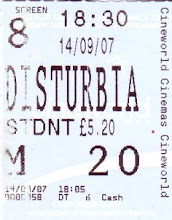Rules
Camera
Shot Order
So that it makes sense you need to move your audience across space smoothly by using a logical order, for example:
LS to MS to CU
Jumping straight from first to last is a little disorientating and should only be used to effect
180 Degree Rule
In a scene there is a 180 degree line which the camera goes up and down but does not actually cross, this is one rule which is never broken because the effect it produces is only confusion. It is mainly applicable during conversations because if the camera crosses the line the 2 subjects appear to be looking in the same direction.

30 Degree Rule
If the camera switches shot but has more or less the same framing (i.e. changes by less than 30 degrees) then the camera seems to jump and it makes the clip seem jumpy and amateur.
Eyeline Match
This ensures that the clip is realistic, so for example if one character is tall than the other, the short one is seen to be looking up and the taller one down.
Match On Action
During action, for example a car moving or a person running, if you decide to cut to another angle or distance then it is important that in the second shot the car/person appears to have moved. Otherwise the action (car moving/person running) seems to repeat.
Shot/Reverse/Shot
This rule is for shooting a conversation
1st shot: Master shot - both characters
2nd shot: CU character 1
3rd shot: CU character 2
Further shots: BCU to show emotion MS can also be used
Editing
Transitions
- Cuts are most common for seamless movement from one shot to another, creates pace and rhythm
- Dissolves provide a slow and relaxing atmosphere (sometimes for a montage effect). Can also be used to show time moving forward and to show a relationship between 2 shots.
- Fading (up/out/to black/from black) shows a significant amount of time passing
- Wipes aren't conventionally used in film, mainly for children's television
Sound
Diegetic
This heightens the realism of the film for the audience as it makes it seem more like the real world
Non-Diegtic
Music can alter the mood dramatically, and is particularly effective at creating suspense because it lets the audience know that something is about to happen. Voice over's aren't very common in films but if they are present they help the audience understand/empathise.
Sound Bridge
This is a way to link 2 scenes quite effectively. It is when the picture and diegetic sound change at different times. Conventionally the sound from the second scene is heard before the picture is shown.

No comments:
Post a Comment